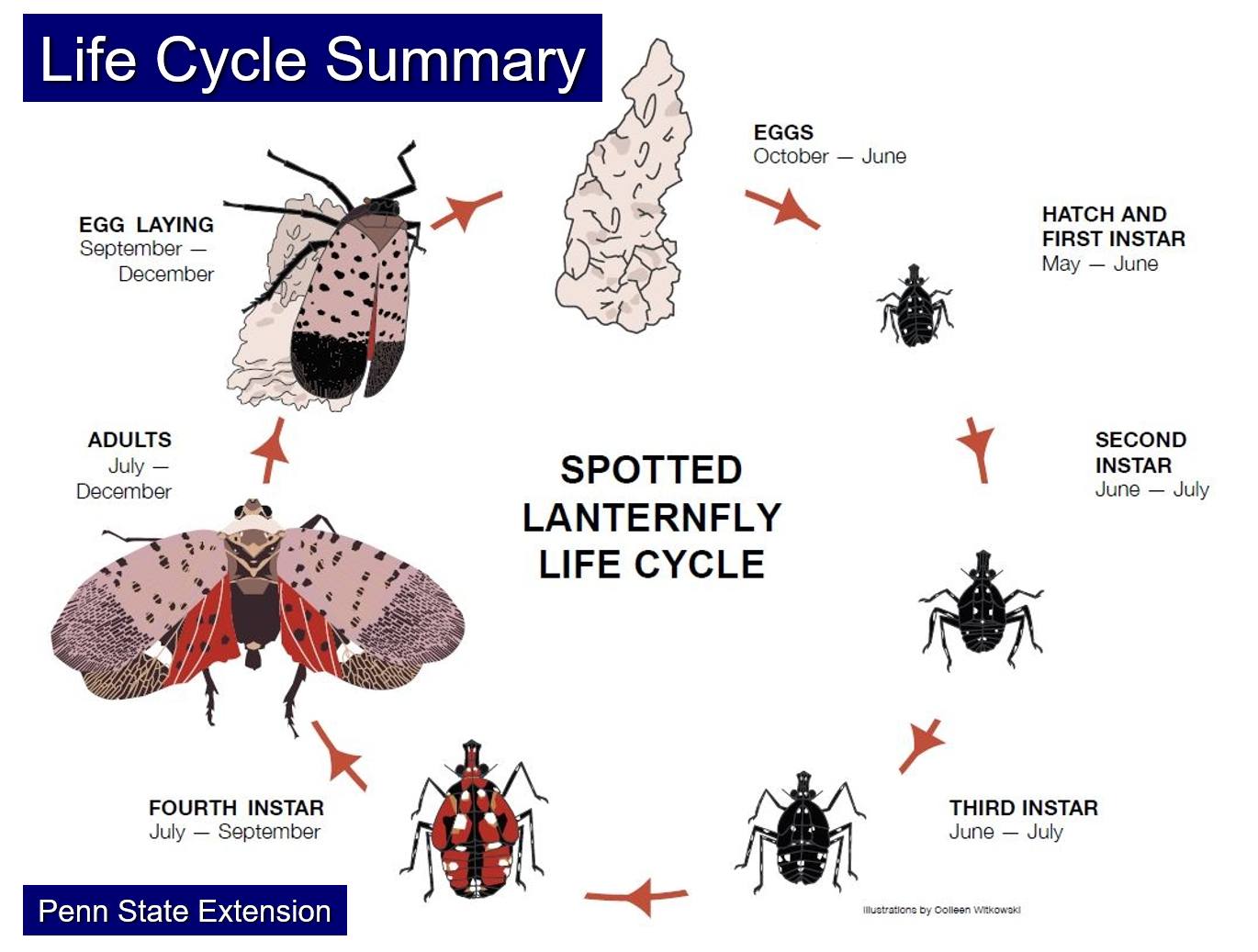Posted Tuesday, August 6, 2024
Spotted Lanternfly and What You Can Do

The spotted lanternfly – which the Indiana Department of Natural Resources labels a “major pest of concern” – is increasingly prevalent in the Huntington area. According to a Parks Department report, hundreds of the invasive insects were recently found on a single tree trunk near Memorial Park.
Spotted lanternflies first made their way into Huntington County about two years ago. They are native to several countries in Asia and likely entered the U.S. by way of a shipment of stone to Pennsylvania in 2012.
The insect attacks trees, grapevines and hops plants, leaving the plant to “bleed” out a sappy secretion called honeydew. They kill trees and can cause extensive damage to crops, particularly grapes and vineyards.
What you can do!
Call and email to report sightings. Beyond that, here are some ways to treat spotted lanternflies:
Sprays: You can make a homemade spray using a combination of natural ingredients like vinegar, rubbing alcohol, water, dish soap or apple cider vinegar. Spraying raw vinegar directly onto nymphs and adults can kill them on contact. You can also mix equal parts Dawn dish soap and water in a spray bottle to kill both live lanternflies and eggs. Soapy water can suffocate the bugs, so you can try mixing ¼-cup of liquid soap with a quart of water and a tablespoon of vegetable oil. After use, clean up dead bugs and eggs to prevent mold.
Systemic insecticides: You can apply systemic insecticides during the growing season by spraying them against tree trunks. These treatments are more expensive than traditional soil injections, but they work quickly and have a residual effect.
Sticky tape: You can wrap trees with sticky tape or tack window screen to them to trap spotted lanternflies. These insects climb and hop, so they'll get stuck on the tape. After removing the tape, throw the lanternflies away.
To report: Call 866-NO EXOTIC (866-663-9684) or send an email (with a photo of the insect if possible) to DEPP@dnr.IN.gov. For more information about this or other invasive pests, please see the Indiana DNR website.